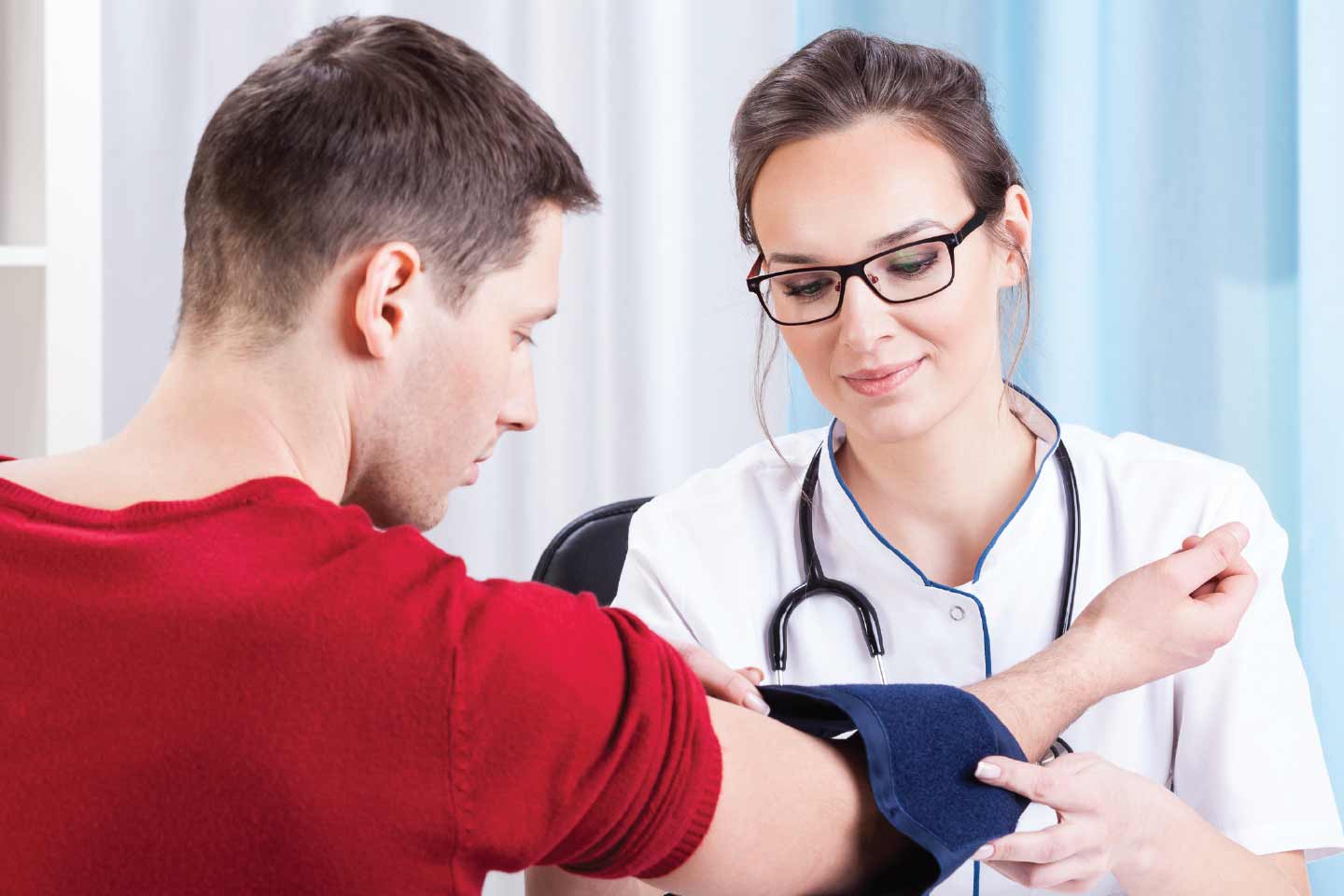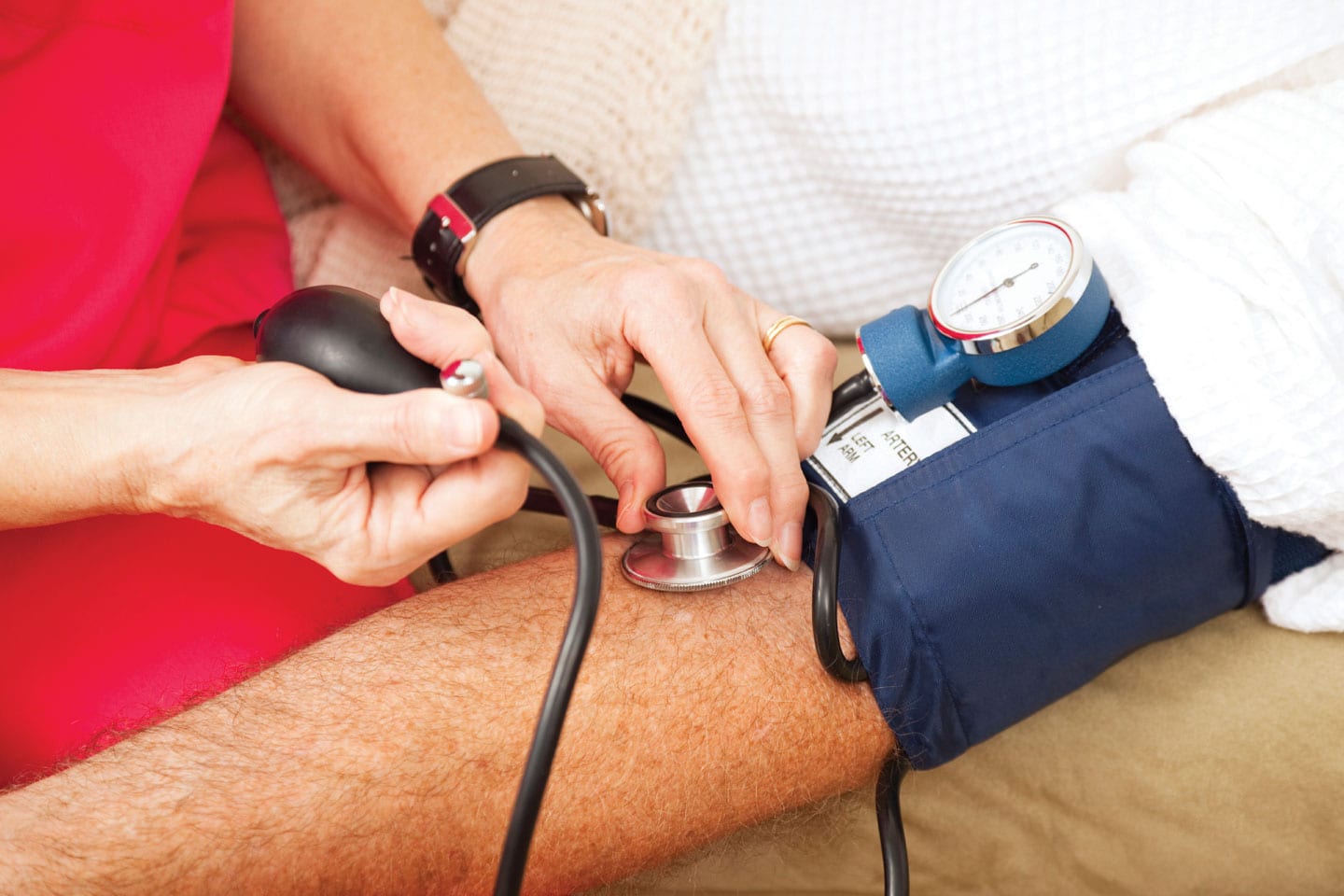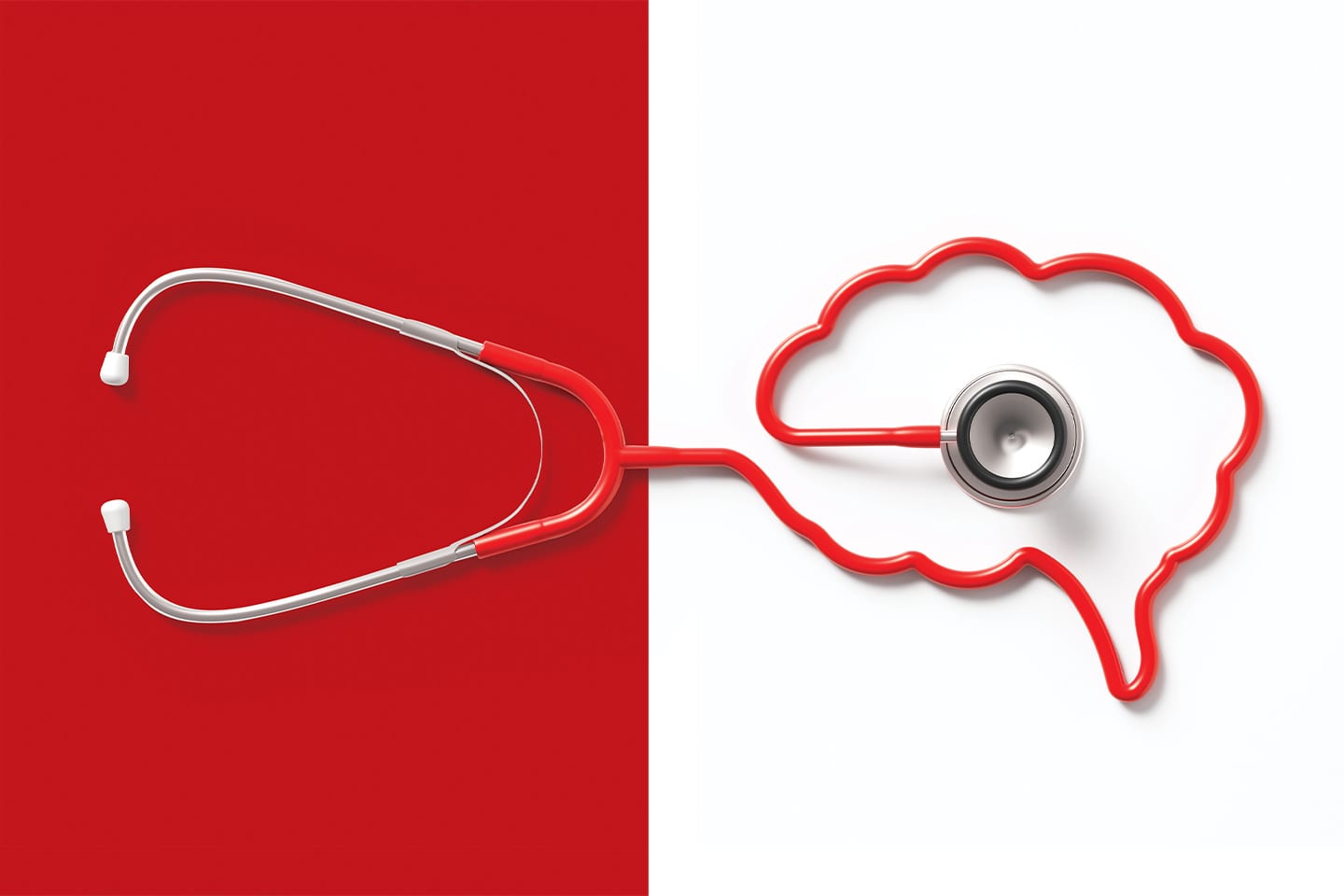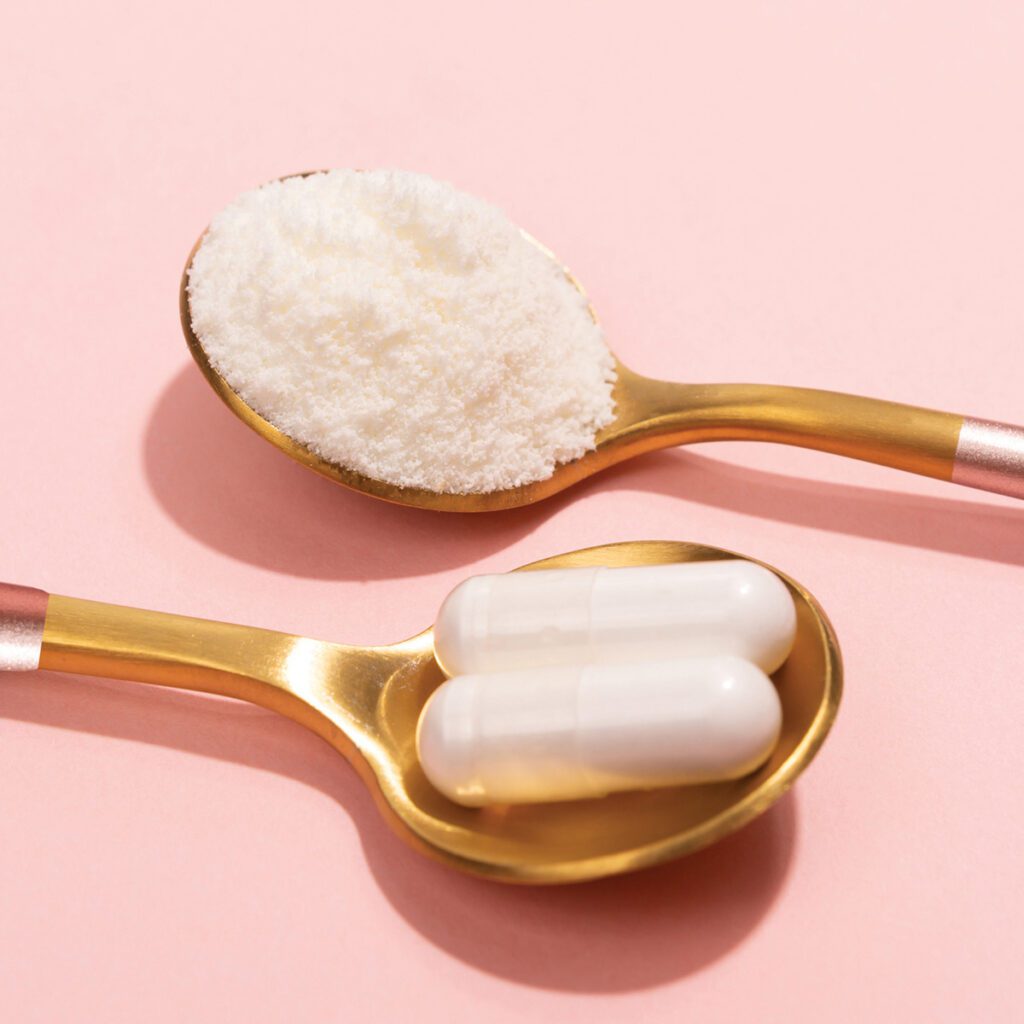
Commonly known as high blood pressure, hypertension is reaching epidemic levels in the United States. Here’s what you need to know about it.
By Mike Haskew
Full PDF here.
Silently, without symptoms, hypertension is creeping up on millions of Americans. Generally referred to as “high blood pressure,” hypertension is the most common type of cardiovascular disease—as many as 69% of people who have a heart attack, 77% of people who have a stroke, and 74% of people with chronic heart failure have it.
In the autumn of 2012, TIME Magazine reported that hypertension-related conditions account for approximately 1,000 deaths per day and that the condition is second only to tobacco use among the primary risk factors to public health. Hypertension also takes a serious financial toll, with related health care expenditures racking up $131 billion every year.
So what is hypertension, exactly? Judging by its name, many think the condition has something to do with stress or anxiety. In fact, hypertension is simply when the amount of pressure, or force, your blood exerts against your body’s arterial walls rises to a dangerous level. If blood pressure rises and stays high over time, it can damage your body in many ways. One important one is that your arteries get stretched beyond their healthy limit.
The causes of hypertension are not always easy to identify—in fact, for many adults, no cause can be identified at all. However, health care experts do classify the condition into two categories: primary hypertension and secondary hypertension.
Primary hypertension usually develops over a period of years as a person ages. Sometimes it is unexplainable. However, it often results from stiffening arteries, long-term build-up of plaque, and/or increased incidence of cardiac and vascular disease.
Secondary hypertension is caused by an underlying condition such as kidney problems, blood vessel abnormalities, adrenal gland tumors, or the use of certain prescription or over-the-counter medications or illegal drugs.
 Since it also has no symptoms, hypertension is often found while doctors are treating another health issue or searching for some other problem. This is unfortunate, because if hypertension goes untreated, it poses major—even life-threatening—health risks. (Thus, its nickname “silent killer.”) In addition to higher risks for heart attack and stroke, hypertension increases the odds that you will suffer an aneurysm—a weakened location in a blood vessel wall that can rupture with life-threatening results. Other complications of hypertension include torn, thickened, or narrowed blood vessels in the eye that can affect vision, issues with your body’s metabolism that could lead to diabetes, and even trouble with thinking and memory.
Since it also has no symptoms, hypertension is often found while doctors are treating another health issue or searching for some other problem. This is unfortunate, because if hypertension goes untreated, it poses major—even life-threatening—health risks. (Thus, its nickname “silent killer.”) In addition to higher risks for heart attack and stroke, hypertension increases the odds that you will suffer an aneurysm—a weakened location in a blood vessel wall that can rupture with life-threatening results. Other complications of hypertension include torn, thickened, or narrowed blood vessels in the eye that can affect vision, issues with your body’s metabolism that could lead to diabetes, and even trouble with thinking and memory.Blood Pressure Awareness
The American Heart Association recommends that all adults receive a blood pressure screening at their regular health care visit or once every two years if their blood pressure is less than 120/80 mm Hg. If you think you may be at risk of hypertension, don’t hesitate to make an appointment with your doctor sooner than this.
If you’ve had your blood pressure checked before, you know that the procedure is simple and painless. The doctor or nurse places a cuff around your arm and uses a small pump to inflate the cuff while using a stethoscope to listen to your pulse. It only takes a few seconds to get a reading.
While no special preparation is needed for a blood pressure check, it’s a good idea to stay away from caffeinated beverages and certain over-the-counter cold and allergy medicines that can affect the accuracy of your reading. Be sure to tell your doctor if you are taking prescription drugs such as birth control pills. You want to make sure you get the right numbers.
For people who need to be more vigilant about monitoring, many stores now sell kits designed to help you test your blood pressure at home. Consider investing in one of these, particularly if you have been diagnosed with high blood or have a family history. Your local grocery store and shopping mall may also offer blood pressure stations for regular testing.
The Numbers Game
Two key numbers are recorded when your blood pressure is taken: systolic pressure, which measures the pressure in the arteries when the heart beats, and diastolic pressure, which measures the pressure in the arteries when the heart rests between beats.
These two measurements are expressed one over the other. According to the American Heart Association, a normal blood pressure reading has a systolic pressure under 120 and a diastolic pressure under 80. A systolic pressure between 120-139 or a diastolic pressure between 80-89 classifies as “prehypertension,” meaning, you need to start taking measures to lower it before you are at serious risk. High blood pressure is diagnosed when you have a systolic pressure of 140 or more or a diastolic pressure of 90 or more.
 As you age, systolic blood pressure is more likely to rise, while diastolic pressure may actually decrease. This is why the National Heart, Lung, and Blood Institute (NHLBI) says the systolic number is a better indicator of hypertension among middle-aged or older adults. In younger people, the diastolic pressure remains an important indicator of risk for heart attack, stroke, or other serious health issues.
As you age, systolic blood pressure is more likely to rise, while diastolic pressure may actually decrease. This is why the National Heart, Lung, and Blood Institute (NHLBI) says the systolic number is a better indicator of hypertension among middle-aged or older adults. In younger people, the diastolic pressure remains an important indicator of risk for heart attack, stroke, or other serious health issues.Listen and Learn
If you are diagnosed with hypertension, the good news is that it is treatable and manageable. Depending on your condition, your doctor may prescribe:
diuretics, which reduce water and sodium in the blood in order to decrease its volume
beta blockers, which open blood vessels and help the heart to beat with decreased force, or
calcium channel blockers, which relax the muscles in blood vessels and reduce the heart rate
Hypertension is very responsive to lifestyle changes, so correcting unhealthy habits may be a key part of your treatment. Don’t smoke. Exercise regularly. Eat a healthy low-sodium diet. Watch your alcohol intake, and try to reduce stress. Simple exercises like walking can reduce stress levels while improving physical fitness and managing your weight. Relaxation techniques and breathing exercises can also reduce anxiety and promote a sense of well-being. Each of these can contribute to lower blood pressure.
Limiting your sodium intake, in particular, can make a big difference in hypertension control. The Centers for Disease Control estimate that most Americans consume 3,300 milligrams of sodium per day. The U.S. Dietary Guidelines recommend limiting this to 2,300 milligrams a day, or even 1,500 for those 51 or older or those at risk of hypertension, diabetes, or kidney disease.
There is no time better than now to start making an effort to lower your blood pressure numbers. Take a few basic steps to guard against hypertension, and you can improve your overall health and quality of life for years to come.
See Related Articles







